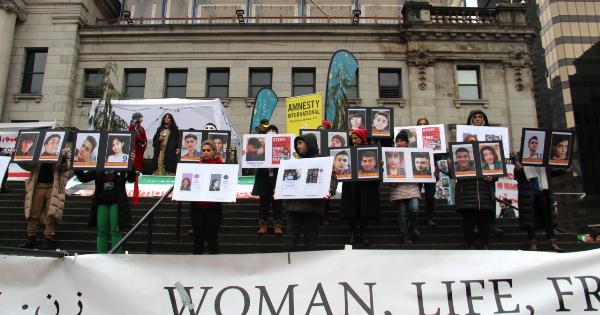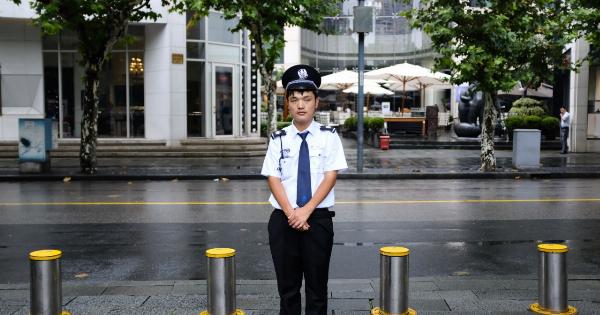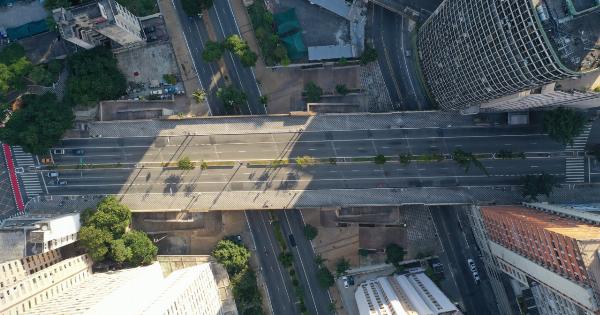Hidden threats are everywhere, lurking in plain sight. They camouflage themselves, disguising their true nature and intentions. But if we remain vigilant and uncover these hidden threats, we can prevent disaster and safeguard our lives and society.
In this article, we will explore the concept of camouflage, its significance, and how it can be used to uncover hidden threats.
Understanding Camouflage
Camouflage is the art of blending in with one’s surroundings. It is a natural defense mechanism employed by various organisms, including animals, insects, and even humans.
The purpose of camouflage is to go unnoticed, to become a part of the environment, and to deceive potential predators or prey.
Types of Camouflage
There are several types of camouflage employed by different species, each tailored to their specific needs:.
Background Matching
Background matching is the most common form of camouflage. Organisms adopt the coloration and patterns of their surroundings, making it difficult for predators or prey to spot them.
For example, the chameleon changes its skin color to blend in with tree branches or leaves.
Disruptive Coloration
Disruptive coloration involves the use of patterns or markings that break up an organism’s outline, making it harder to identify. This technique is commonly observed in animals like zebras or tiger stripes.
Mimicry
Mimicry is when an organism imitates another organism, often a more dangerous or undesirable one, to deter predators or deceive prey.
For instance, harmless insects can mimic the appearance of venomous species, preventing themselves from becoming a target.
Countershading
Countershading is a form of camouflage where an organism’s body is darker on top and lighter on the bottom. This helps it blend with its surroundings, whether it’s swimming beneath the water’s surface or walking on land.
Deceptive Resemblance
Deceptive resemblance involves imitating non-living objects or elements of the environment. This type of camouflage is often employed by insects or birds, making them appear like rocks, twigs, or even leaves.
Camouflage as a Survival Strategy
Camouflage serves as a vital survival strategy for countless organisms in nature. It allows them to avoid being detected by predators and increases their chances of successfully hunting prey. However, camouflage is not limited to the natural world.
Humans, too, have harnessed the power of camouflage for a variety of purposes. Military forces around the world utilize camouflage to blend with their surroundings, making it difficult for the enemy to detect them.
Similarly, hunters wear camouflage clothing to conceal themselves from their target animals.
Uncovering Hidden Threats
The same techniques that camouflage predators can also be employed by threats that seek to harm us or society at large. In today’s world, hidden threats can take many forms:.
Cybersecurity Threats
Cybercriminals utilize sophisticated techniques to blend in with the digital realm, making it difficult to identify their malicious activities.
They camouflage themselves with seemingly harmless emails, websites, or software, tricking unsuspecting users into becoming victims of cyber-attacks.
Social Engineering Attacks
Social engineering attacks involve manipulating individuals through psychological manipulation and deceit.
Attackers may camouflage themselves as trustworthy individuals, such as tech support personnel or colleagues, to gain access to sensitive information or compromise security systems.
Hidden Biases and Discrimination
Hidden threats are not always external. Prejudices and biases can be deeply ingrained and camouflage themselves within our own minds. These hidden biases can lead to discrimination and social inequalities, perpetuating harm and division.
Terrorism
Terrorist organizations often operate covertly, camouflaging their activities within communities to avoid detection.
They exploit cultural, social, or religious camouflage to blend in and carry out their malicious acts, making it challenging for law enforcement agencies to uncover and prevent their actions.
Human Trafficking
Human traffickers employ various forms of camouflage to conceal their operations and victims. They may masquerade as legitimate businesses or use hiding places that blend with the surroundings to evade authorities.
Environmental Threats
In nature, threats can often camouflage themselves as ordinary elements of the environment. Invasive species may sneak into new habitats, disguising their presence until they cause irreparable damage to native ecosystems.
Unmasking Hidden Threats
Uncovering hidden threats requires a multi-faceted approach:.
Education and Awareness
By educating ourselves and raising awareness about camouflage techniques employed by different threats, we can become more vigilant and recognize potential dangers.
Strong Security Measures
Implementing strong security measures, such as robust cybersecurity protocols, can help unmask hidden digital threats and protect individuals and organizations from malicious activities.
Overcoming Biases
Overcoming hidden biases within ourselves and society is essential to fostering inclusiveness and equality. It requires introspection, education, and a willingness to challenge preconceived notions.
Collaboration and Intelligence
Combating hidden threats requires collaboration between various stakeholders, including law enforcement agencies, intelligence communities, and concerned citizens.
Sharing information and intelligence can help uncover and neutralize threats effectively.
Conclusion
Camouflage is a powerful tool employed by both predators and threats hiding in plain sight. By understanding the various forms of camouflage and remaining vigilant, we can uncover hidden threats and protect ourselves from their harmful intentions.
It is through education, awareness, and collaboration that we can successfully expose the camouflage and safeguard our lives and society from these lurking dangers.



























